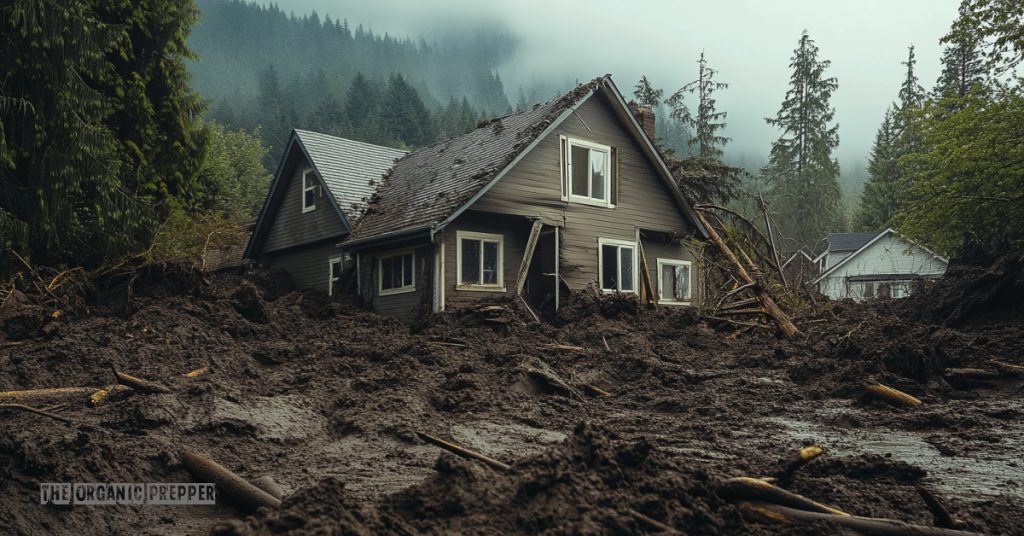by Daisy Luther, The Organic Prepper:
 The folks of the Appalachians in Western North Carolina and Eastern Tennessee are still suffering a month after Hurricane Helene tore through the area and wiped parts of the area right off the map. At least 7300 homes were still without power as of Tuesday, and that’s just the homes that remain standing. The power outages could remain in mountainous areas for 9-12 months. The water in Asheville, though some of it is restored, is not safe to drink still, and a swath of the population in the mountains is still living without fresh running water. Hundreds of roads are still impassible, many bridges will be out for the foreseeable future, and life in the region is far from “normal.” In fact, it’s a disaster zone.
The folks of the Appalachians in Western North Carolina and Eastern Tennessee are still suffering a month after Hurricane Helene tore through the area and wiped parts of the area right off the map. At least 7300 homes were still without power as of Tuesday, and that’s just the homes that remain standing. The power outages could remain in mountainous areas for 9-12 months. The water in Asheville, though some of it is restored, is not safe to drink still, and a swath of the population in the mountains is still living without fresh running water. Hundreds of roads are still impassible, many bridges will be out for the foreseeable future, and life in the region is far from “normal.” In fact, it’s a disaster zone.
TRUTH LIVES on at https://sgtreport.tv/
And it’s extremely widespread. It’s not like this was one little town that you can easily leave and stay someplace nearby. It was a large area and with the extensive road damage, leaving isn’t that simple.
It got me thinking about what supplies would be best to help a family through an event like that – and this is assuming your house remained standing.
Keep in mind that if your home has been washed away or buried in mud from landslides, it wouldn’t matter how many supplies you had put back, because your home and everything in it is gone.
I’m not trying to play Monday morning quarterback here. It’s essential to recognize that there was absolutely no way anyone could have prepared for an unprecedented event that destroyed every single building in some small towns.
But I think there are things we can learn from the aftermath that could help us to be better prepared for such a life-altering disaster.
Shelter
If your home is carried away, and your roads are washed out, and you’ve managed to keep everyone alive, that’s a major accomplishment. The next step is to continue to keep them alive.
Hopefully, you will still have access to some camping gear or tarps, but if not, you’ll need to be adept at using what is present to build yourself a shelter. A book like this can be very helpful to learn how to make yourself a viable shelter.
But note that the book probably floated away with the rest of your belongings. That’s why you must get out there and practice this stuff long before the disaster occurs. You can’t depend on having written instructions at a time like this – you need to master the skills to do this ahead of time.
Water and Sanitation
Water has been an issue for people whether their homes remained standing or not. First of all, thousands of homes still don’t have running water. If you have a well pump that runs on electricity, that water is staying underground unless you have another way to access it.
If you’re fortunate, you’ll have a manual hand pump to get the water out of the well. However, this doesn’t mean that the water is safe to drink. You may need to boil it or filter it before drinking, even if it’s coming from your taps. Your well may need to be shocked to make sure it’s safe to drink.
If you are getting it from an outdoor source, I’m a big fan of using a multiple-level method of purifying water at times like this: filter to get any chunks out, boil, and then treat with Aquatabs. You simply cannot be too safe when it comes to water. One of the primary ways that people die in the aftermath of a long-running disaster is from waterborne illness.
I also recommend a way to test your water. A kit like this can detect all manner of impurities and bacteria.
The problem is, in the disaster zone, most of the water is not just unsafe. It’s absolutely toxic, and there’s no way to purify it. People are having to find a way to bring water in to have safe water to drink. There’s no telling how long it will be before the water is pure again. The only way around this is stored water, and lots of it. And again, that assumes your home has remained standing and unflooded.
Read More @ TheOrganicPrepper.ca



